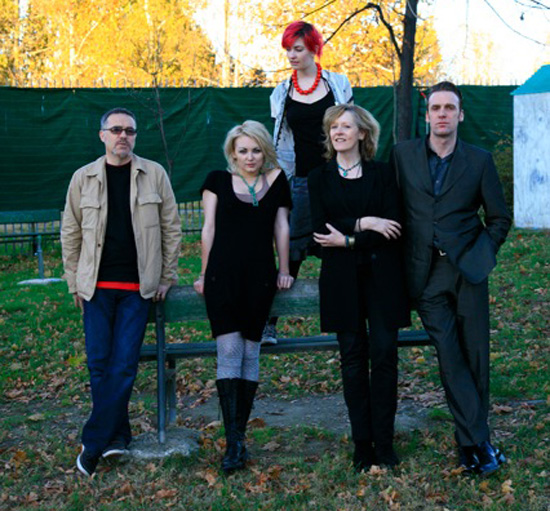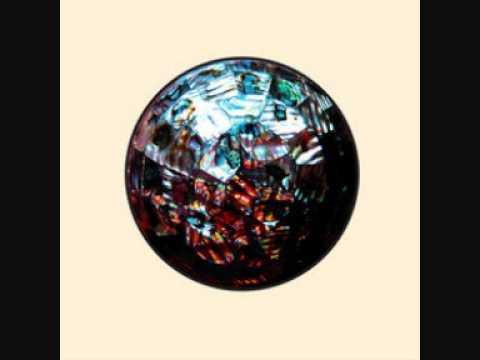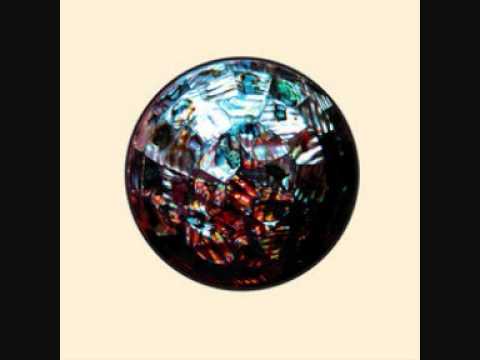The music of Fovea Hex has been best described by Matmos’ Drew Daniel as “song-spells that are untimely in the best possible sense; their intimacy and raw emotional power feel centuries old, but the experimental sound-design can be shockingly modern.”
This deft confusion of the ancient and the avant garde is the result of a long, serendipitous journey taken by Ireland’s Clodagh Simonds from the now-influential prog folk of Mellow Candle (the band she formed as a teenager in the late sixties whose tracks have since been covered by the likes of All About Eve and Stephen Malkmus), through session work for the likes of Thin Lizzy and Mike Oldfield, and into the murky waters of the mainstream music industry that eventually sent her sailing back to her roots in Ireland. Seven years’ ago her music finally re-emerged as Fovea Hex with a beguiling series of three EPs under the umbrella title of Neither Speak Nor Remain Silent. For that series she directed an extraordinary cast including Brian Eno and Roger Eno, Carter Burwell and Robert Fripp, while combining the raw talents of young Irish musicians with the electronic abstractions of key figures from the post-Industrial underground (including The Hafler Trio and Nurse With Wound’s Colin Potter). Currently, Simonds has described Fovea Hex’s backbone as being formed of herself, Potter, Michael Begg, Cora Venus Lunny and Laura Sheeran.
Clodagh spoke to the Quietus about Fovea Hex and their recent album, Here Is Where We Used to Sing, revealing deep insights into her working methods and casting fresh perspectives on the consequences of today’s digital landscape along the way.
Fovea Hex’s music uniquely orchestrates traditional instruments ranging through the ages – from the ancient (psaltery) through the classical periods (lyre) to the more familiar ‘early modern’ sounds of piano and strings – together with computer-based ambient electronica. What first attracted you to the new manipulations afforded by modern technology, and has it affected the way you set about writing songs?
Clodagh Simonds: Ever since I first heard Phil Spector, I’ve been enamoured of the artificial enhancement of sound, so it started early. I did try right away to emulate it – I heard ‘Da Doo Ron Ron’ on a jukebox in a cafe, when I was around 10, and as soon as I got home to the piano, I discovered my formula for the next few years: keep your foot hard down on the sustain pedal at all times, play fast and extremely loudly, round up a few friends with equally loud voices, and all sing at once.
Musically, I had a very sheltered upbringing… My piano teacher (I took classical piano lessons between the ages of about 8 and 14) was a very dear, very old white-haired lady, and I suspect she might not have known ‘modern composers’ existed. The most exotic thing I’d been exposed to would have been plainchant, which I did love – being a Convent girl I got a steady, if not abundant, dose of it…
And then there was Ligeti. Hearing Lux Aeterna for the first time was a revelation. I stumbled on a documentary about Ligeti on the BBC when I was 13 or 14. I couldn’t believe my ears, and I couldn’t believe how strongly I loved what I was hearing – I felt this enormous joy, to hear something so free and so unique. When I heard it again, maybe a year later, on the soundtrack to 2001: A Space Odyssey, I remember being quite overwhelmed – because I hadn’t been able to forget it, but I had no idea if I would ever hear it again. But at that time I didn’t really have any exposure to anything very experimental, so I had no context for it – I didn’t know anyone else who found it as exciting as I did.
It wasn’t really until I was about 18 and had moved to London, and met Willy (the drummer in Mellow Candle) that I began to hear more experimental music again. He’d been playing with Kevin Ayers Whole World and hanging out with the so-called Canterbury set, and introduced me to music by Soft Machine, and Hatfield & the North, Henry Cow, Gong, and so on. None of it made quite the same impact as Ligeti had, (and nobody would until I heard Arvo Pärt around 1987) but, again, the sense of liberation was in itself a real tonic. I first met Brian Eno around that time also, he had just left Roxy Music and he was doing really intriguing, fresh, inspiring work. He was very adept technically, which fascinated me, but also daunted me.
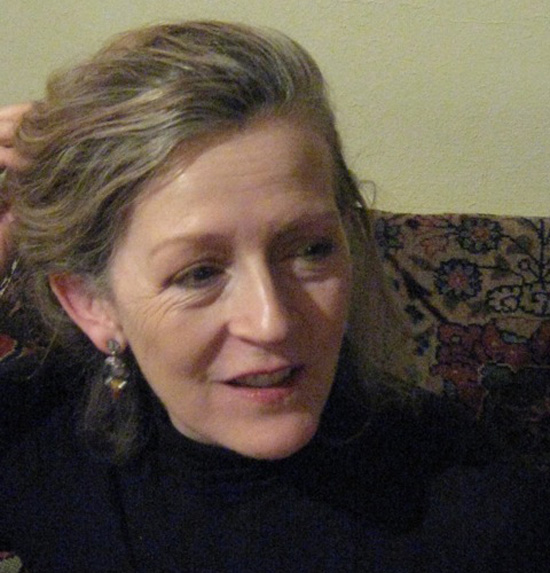
For a long time, the idea of actually being able to record anything of my own in the way I increasingly wanted to remained elusive. I couldn’t afford my own recording equipment, and I would save up for literally a year to get into a studio for about four hours to record a demo. When small portable recording devices finally became affordable for me, which was many years later, it definitely had a huge influence on my writing. Previously, for any phrases or chord sequences to survive, they had to be memorable – if I found something I liked, I would repeat it and repeat it, to brand it in to my memory so that it would survive until the next day. Frequently, I would lose fragments, because they just weren’t robust enough to survive in memory, and I was more or less completely inept at scoring (and still am, I’m ashamed to say). When it became possible for me to immediately record any interesting progressions or phrases, then of course I was able to capture far more ephemeral material, as it arose. As I started to find more freedom to move away from symmetry and repetition in the music, it had a knock-on effect on my lyric writing – strict metre became an option, rather than an imperative.
The next big leap was being able to actually see the piece on a monitor. When a piece of music becomes visible as well as audible, then, literally, a whole other dimension comes into play. To be able to cut it up, move things around, switch sounds between one part and another, that facility represents a world of difference, quite literally. At the same time there was a vastly expanded palette of sounds to play with. When I finally managed to get my own computer, and a Roland JV1080, and taught myself how to work with music software (and this would have been about the mid 90s, I’m a late-adopter!) I thought I’d died and gone to Heaven – I felt I’d been waiting all my life for these tools.
So I love the freedom which modern technology has brought, and without a doubt, it has changed the way I write. But personally, I prefer to see it as augmenting, rather than replacing, what was already there. For me, something about the sight of a row of people with laptops generating music never seems to work, even if I like the material. The visual impression is sterile, even if there are fascinating projections, something is cold and dry – while something about the sight of an orchestra or a choir or a band, the impression of co-ordinated humans, moving limbs, moving mouths, just makes a visceral impact that’s very engaging, very affecting, even if the material isn’t hitting the spot. I guess what I’m doing with Fovea Hex is trying to present the best of both worlds – visually, as well as audibly, both elements are present – humans playing and singing, together with sounds that humans can’t produce – and I often feel that’s where I was heading all along.
The latest album, Here is Where We Used to Sing, seems to suggest a warmer climate to the more glacial, wintery sounds of the preceding trilogy of EPs with the voice positioned more centrally. Was there a conscious effort to contrast with the earlier recordings in any way?
CS: In practical terms, I guess there were two clear decisions which affected the way I approached recording Here Is Where We Used To Sing. One was that I wanted each piece to have a distinct beginning and end. In the Neither Speak Nor Remain Silent trilogy, there was quite a lot of seepage from one piece to another, the boundaries were blurred in several places. I enjoyed that, and I think it worked well for the EPs – but I didn’t want to use that device again, on a full length album.
The second decision arose from the difficulties we encountered in performing the pieces from Neither Speak Nor Remain Silent. There are hardly any places where strong beats are sustained for long, and in many places, there is scant demarcation of rhythm, or none at all. And yet a lot of precision is demanded in terms of vocal phrasing – the vocals are arranged frequently for more than one voice, and in some places, they’re very tightly synchronized. In the recordings, it makes for quite an effective juxtaposition – but to try and reproduce it faithfully, live, is challenging, to put it mildly. So while I was working on the arrangements for Here Is Where We Used to Sing, I was somewhat more mindful as to the assembly and assignation of different lines and parts – I think the result is that as a whole it sounds a bit more earthed, a bit closer to the ground…
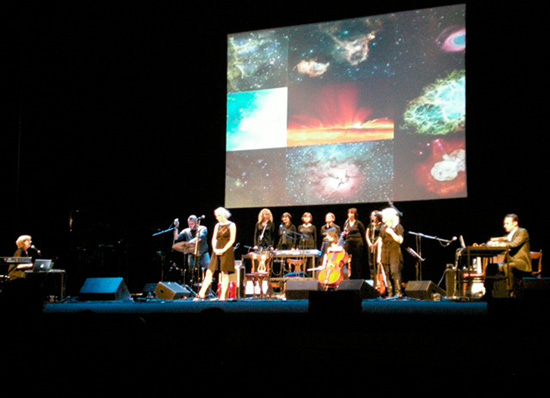
The album’s title suggests a time and place when songs are no more. Are you concerned about the extinction of songcraft in a world of diminishing attention spans seeking immediate gratification?
CS: Well, the title is actually quite ambiguous – that’s what struck me about it, when it first suggested itself. It can be interpreted as conveying a kind of nostalgia, but it also says something about using whatever is at hand, using what is here – as opposed to everything arising from a preconceived blueprint.
As regards the present drive towards fragmentation, the demand for ever-more-abbreviated, fast-food ‘bits’ of everything – it can sometimes be a bit dismaying and discouraging to witness, but I don’t feel it especially jeopardizes songcraft. Joanna Newsom defies that current very successfully, and her work is very popular. And of course there are a great many others who are perhaps less well known, who stand completely apart from it, and manage to flourish less visibly.
It isn’t to everybody’s taste to just go on abbreviating. I try to not become too concerned, and to carry on working the way I work, which is in the other direction – to stretch the attention span a bit, and to reward a more focused listening, hide things so they won’t be found straight away. I think it’s pretty fruitless to lament what’s happening in the mainstream – there has to be a mainstream which is just being carried along by whatever currents are prevailing.
Something is definitely accelerating in that direction, and that’s the way it is, it’s a reality, like the weather – what is the point in being dismayed by it? If it’s observed a bit dispassionately, it’s actually fascinating. I think most of us agree that we’re approaching a massive collapse of stability. It’s pretty obvious we’re reaching some kind of nadir, and that nobody is really at all certain what’s going on. We’re quite literally ‘in the dark’. It’s happening on so many different levels. That could be scary and dismaying – but on the other hand, we could welcome it.
I seem to be more or less celebrating it: we released a CD single on January 1, called Hail Hope! and there are two songs, a Carol and a Lullaby, and both of them are essentially about the fact that the darkest hour, the nadir, can be a good place – because that’s where you can find hope. If everything is going along just fine, there’s no need fo hope to appear. It can’t be invoked artificially, just by thinking about it – it can’t exist where it’s not needed. It’s a real force, I believe, but it has to be dark for it to emerge. Surely that’s what lies behind the whole phenomenon of celebrating the darkest point, the midwinter point? You can’t go any darker, and you’ve arrived at a tipping point when the light is going to start returning.
Having been involved with the music industry since the late sixties both on stage and behind the scenes (including a role as one of Richard Branson’s PAs at Virgin Records), how do you regard today’s business of digital distribution, fuelled by technology that enables more people than ever to produce and release their product?
CS: It means that the room is very much more crowded now, and people who are more strongly driven by ambition will always succeed in thrusting themselves to the front, even though their ambition, their need for attention, and their cyber-skills may far outweigh their talent. When computer literacy is as important in defining your prospects as a musician as actual talent, the whole perspective changes. I don’t agree that mastering a piece of software can be regarded in the same light as learning to master an instrument – it’s a completely different kind of skill, infinitely less complex and less demanding. It’s just your head. You don’t need to directly connect to your body or to your feelings the way you do when learning how to play an instrument. So the kind of music you are going to come up with is going to be coloured by that, it couldn’t be otherwise.
I was looking up a list yesterday – one of those ‘Best Hopes for 2012’ kinds of lists. Ten acts I’d never heard of and little clips of each of them. I hate to seem like a jaded old cynic, but the impression I got was of a lot of dazzling technique, a lot of style – but very weak, derivative content. Everything seemed hugely formulaic – even across various genres. Within two bars, you can either identify most of the software and samples, or you can safely predict exactly what the chord progressions will be, what the vocal lines are going to do, and what the lyrical content will be – it’s super-predictable, and so not very stimulating – but on the surface, it’s all very glossy. A bit like a photo-shoot for a recipe book: it looks amazing, but actually it isn’t really food. I’m not saying there isn’t any interesting new music out there – I would never say that – but on this particular list, it was pretty depressing, and I think a lot of the music that can now be made thanks to digital technology, which wouldn’t have been possible before, is like this – strong on form, and weak on content. Fabulous tools, but being used on stale, derivative material.
The impact of digital technology on the way music is procured is also really depressing if you’re a musician, though of course it’s fantastic if you’re a consumer. It’s a bit soul-destroying when you get a little alert that tells you that yet another person who claims to ‘love’ your work has gone and uploaded it for everyone to grab. There is a whole generation now for whom the concept of paying for music is more or less alien. And perhaps, again, it’s fruitless to lament. The consequences are hard to see, although I have to say, it already feels as if we’re all buskers again, we play and sing because we love to play and sing, and if we’re lucky, someone throws a few bob at our feet now and again!
In any event, in the pre-digital days, it was the record companies who were raking in the cash, for the most part, and not the musicians. The trouble with being a musician is that you’re never going to stop being one, whether you’re noticed or rewarded or not, and everyone knows it.
Header photo Fovea Hex in Turin (L-R: Colin Potter, Cora Venus Lunny, Laura Sheeran, Clodagh Simonds, Michael Begg)

